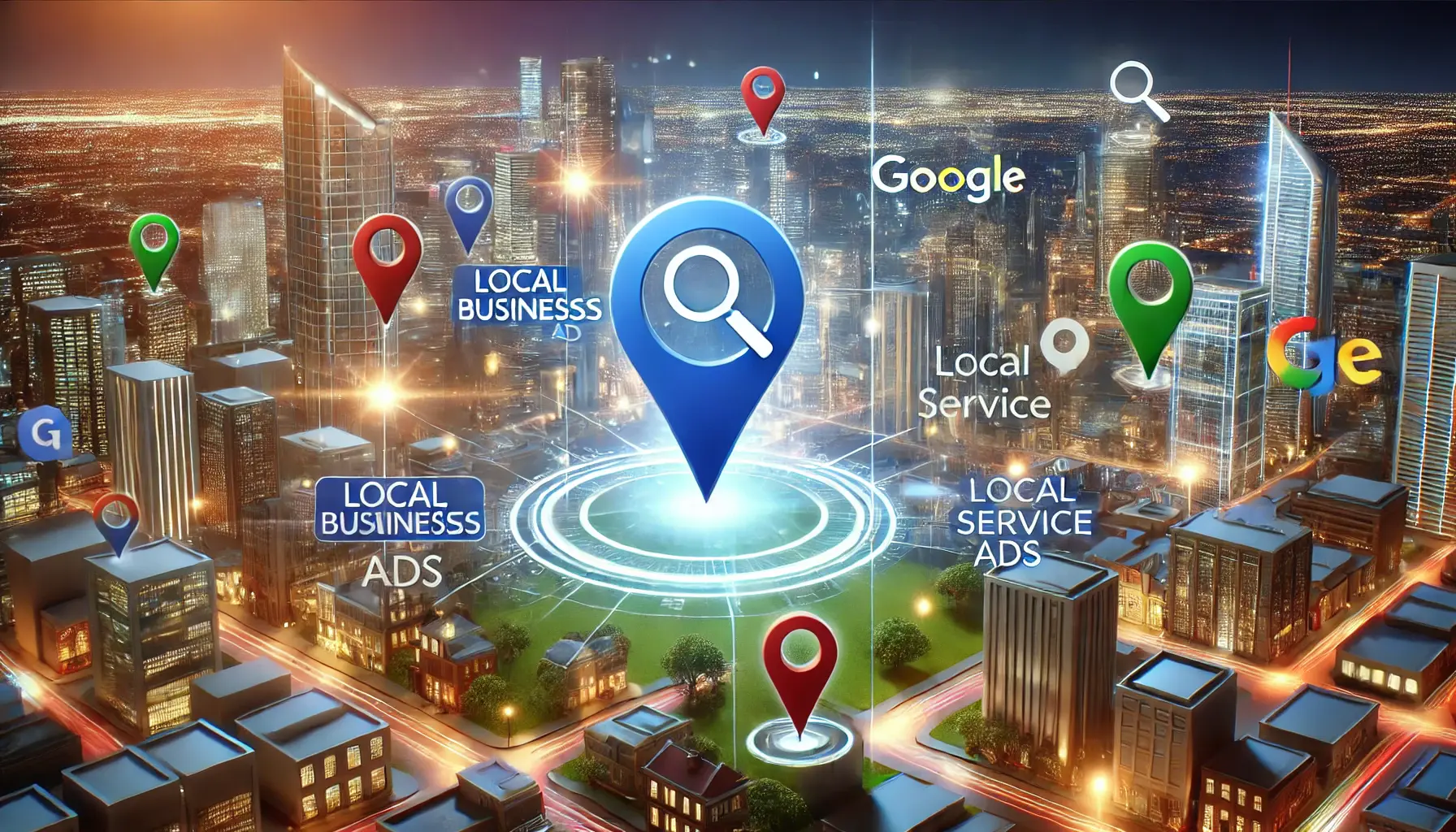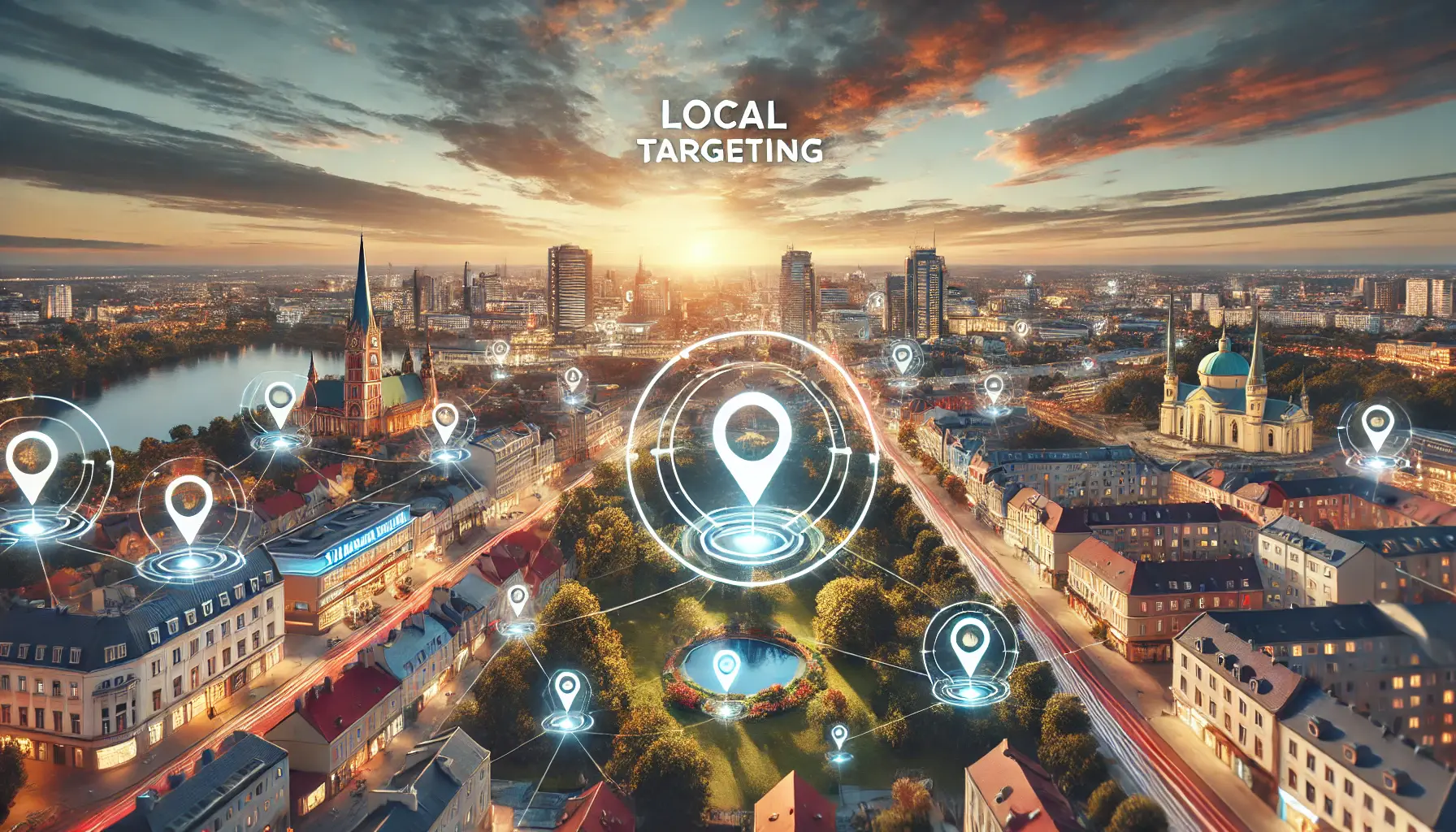Success in online marketing hinges on choosing the right platform.
Local Service Ads or Google Ads dominate the digital marketing landscape, but the question remains: which one suits your business best?
Understanding the key differences between these platforms and their unique advantages will help you make informed decisions.
Whether you’re aiming to attract local clients or reach a broader audience, this guide will explore Local Service Ads vs Google Ads to help you identify which aligns with your goals.
- Understanding Local Service Ads and Google Ads
- Cost Structures: Pay-Per-Lead vs. Pay-Per-Click
- Ad Placement and Visibility in Search Results
- Targeting and Audience Reach
- Trust and Credibility: The Google Guarantee Badge
- Making the Right Choice: Local Service Ads vs Google Ads
- Frequently Asked Questions: Local Service Ads vs Google Ads
Understanding Local Service Ads and Google Ads
Let’s explore what both Local Service Ads and Google Ads offer.
While they serve different purposes, understanding their core functionalities is essential to maximizing your advertising efforts.
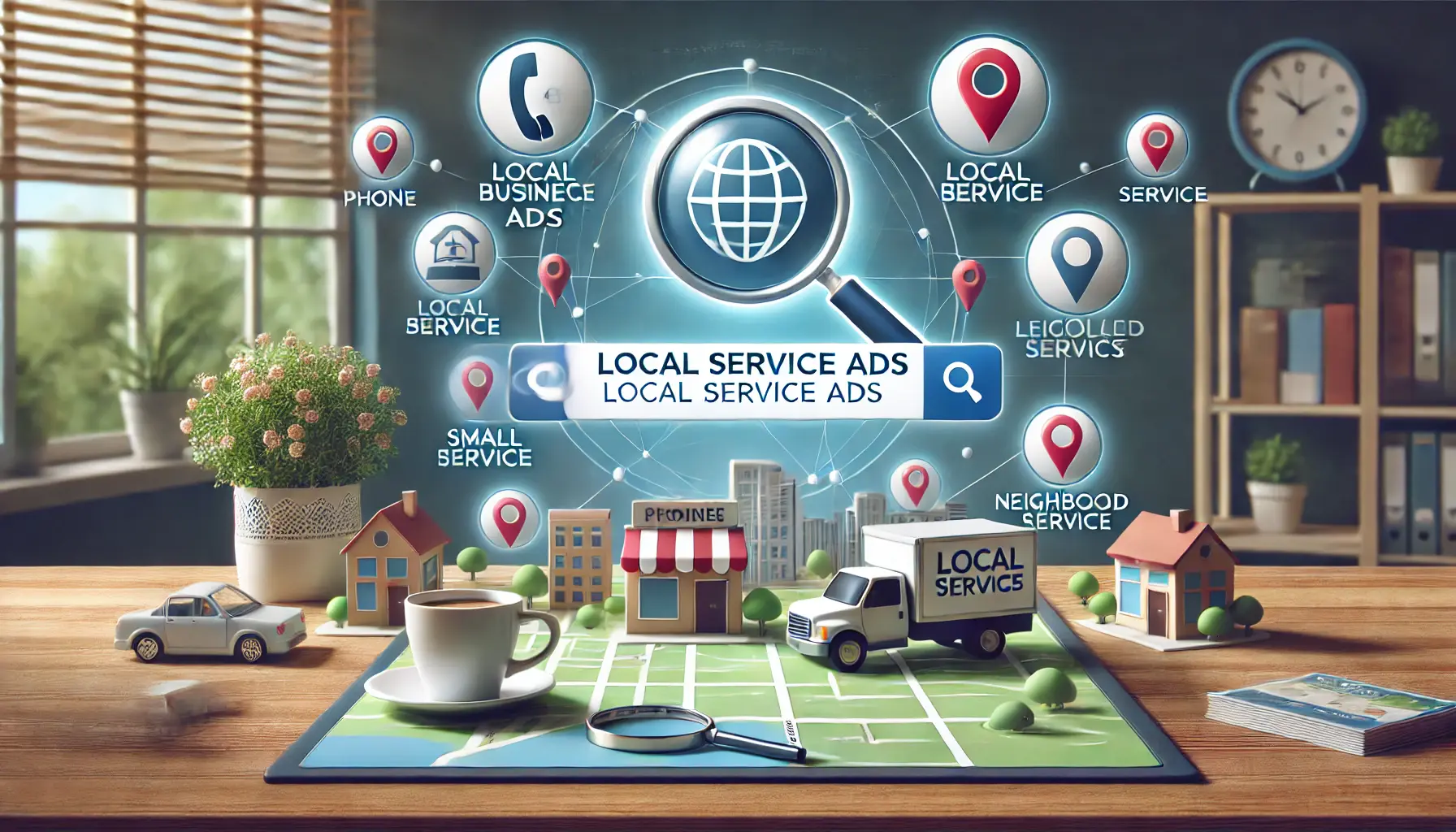
A visualization of Local Service Ads highlighting their focus on localized targeting and trust.
What are Local Service Ads?
Local Service Ads are designed to help service-based businesses connect with customers in their area.
These ads appear at the top of search results, offering a convenient way for customers to find and contact local professionals.
The Google Guarantee badgeA certification provided by Google for businesses that pass screening and verification, enhancing trust. prominently displayed with these ads instills trust, making them appealing to customers who value dependability.
Unlike traditional advertising models, Local Service Ads operate on a pay-per-leadAn advertising pricing model where businesses pay only when a customer inquiry is generated. basis.
This means businesses only pay for actual inquiries, making them a cost-effective solution for small and medium-sized businesses.
Common industries using Local Service Ads include home services, legal services, and healthcare providers.

A depiction of Google Ads highlighting its advanced analytics and global advertising capabilities.
What are Google Ads?
Google Ads, formerly known as Google AdWords, is a versatile and dynamic platform catering to businesses of all sizes.
It enables customized campaigns targeting specific keywords, demographics, and locations.
With Google Ads, businesses can choose from various formats, including search ads, display ads, video ads, and shopping ads.
This platform operates on a pay-per-clickAn online advertising model where businesses are charged each time their ad is clicked. (PPC) model, meaning you pay whenever someone clicks on your ad.
It provides robust analytics tools to track performance and optimize campaigns, making it a powerful tool for marketers seeking broader reach and flexibility.
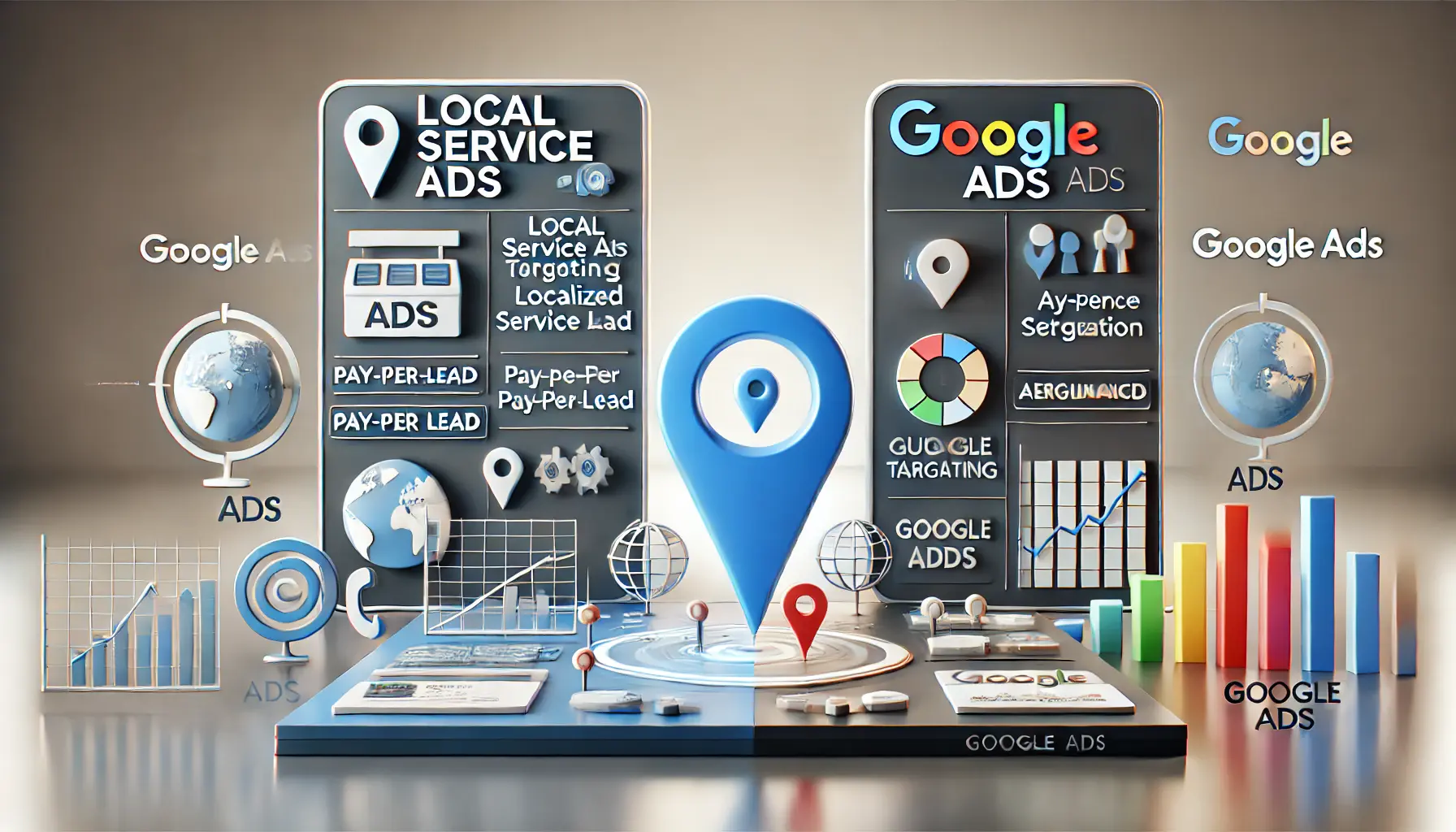
A side-by-side comparison of Local Service Ads and Google Ads, showcasing their unique features.
Key Features of Each Advertising Platform
Both Local Service Ads and Google Ads offer unique features tailored to different marketing goals.
Here’s a quick comparison:
- Local Service Ads: Pay-per-lead pricing, localized targeting, Google Guarantee badge, and high visibility in local search results.
- Google Ads: Pay-per-click model, advanced targeting options, diverse ad formats, robust analytics, and remarketing capabilities.
Understanding these key features will help you determine which platform best fits your business needs and budget.
Choosing the right advertising platform can transform your business strategy, so understanding the core functionalities of Local Service Ads and Google Ads is essential.

A visual representation of the cost structures for pay-per-lead and pay-per-click models.
Cost Structures: Pay-Per-Lead vs. Pay-Per-Click
Understanding the cost structures of Local Service Ads (LSAs) and Google Ads is crucial for optimizing your advertising budget.
Each platform employs a distinct pricing model that can significantly impact your return on investment.

A visualization of how businesses are charged under the pay-per-lead model of Local Service Ads.
How Local Service Ads Charge Businesses
Local Service Ads run on a pay-per-lead foundation, meaning you pay only when a potential customer contacts your business directly from the ad.
The cost of each lead will differ based on the conditions of the market, industry, and competition.
For example, the leads may be more expensive in highly competitive markets or industries.
This model is cost-effective for service-based businesses because your budget directly contributes to acquiring actual customer inquiries.

A representation of the Google Ads pay-per-click payment model and its key features.
How Google Ads Work on Payment
On the other hand, Google Ads operate on a pay-per-click (PPC) model.
With this model, you bid for specific keywords related to your business, and a certain amount is deducted whenever someone clicks on your ad.
The cost per click depends on the competitiveness of the chosen keywords and your targeting parameters.
While this model can drive significant traffic to your website, it is essential to monitor and optimize campaigns to ensure that clicks translate into valuable leads or sales.

A visualization of cost and ROI comparison between Local Service Ads and Google Ads.
Comparing Costs and Return on Investment
When deciding between Local Service Ads and Google Ads, consider the following:
- Budget Predictability: With LSAs, costs are more predictable because you pay for verified leads. In contrast, costs in Google Ads may vary depending on keyword competition and bidding strategies.
- Lead Quality: Generally, LSAs generate better-quality leads since users are specifically looking for services within their location. Google Ads can reach a wider audience, but the intent may vary, which can affect lead quality.
- Cost Efficiency: For local service providers, LSAs can be more cost-effective due to the pay-per-lead model. However, businesses aiming for broader brand awareness might find value in the expansive reach of Google Ads, despite potentially higher costs.
By understanding these cost structures, you can align your advertising strategy with your business objectives and financial considerations, ensuring an effective and efficient marketing approach.
Evaluating the cost structures of LSAs and Google Ads helps you align your budget with business goals effectively.
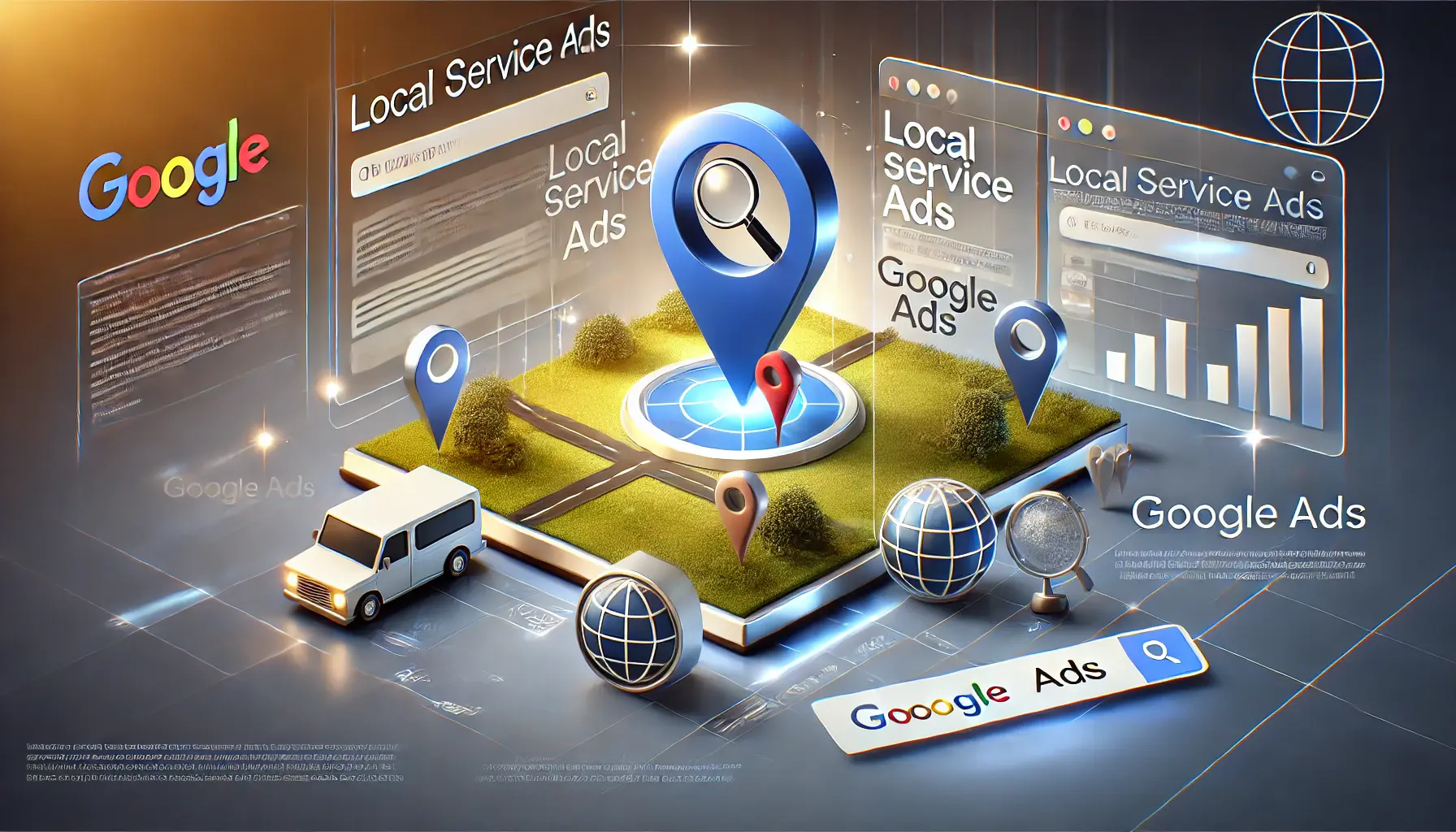
A representation of ad placement and visibility on search engine results pages.
Ad Placement and Visibility in Search Results
While comparing Local Service Ads (LSAs) and Google Ads, it is important to examine ad placement and visibility.
These factors significantly influence the online presence and customer reach of your business.

A depiction of Local Service Ads’ prominent placement in search results.
Where Do Local Service Ads Appear?
Local Service Ads are prominently displayed at the very top of Google’s search engine results pages (SERPsSearch Engine Results Pages, the pages displayed by search engines in response to a query.), even above traditional Google Ads and organic search results.
This prime positioning ensures maximum visibility for local service providers, making it more likely that potential customers will see and engage with your business first.
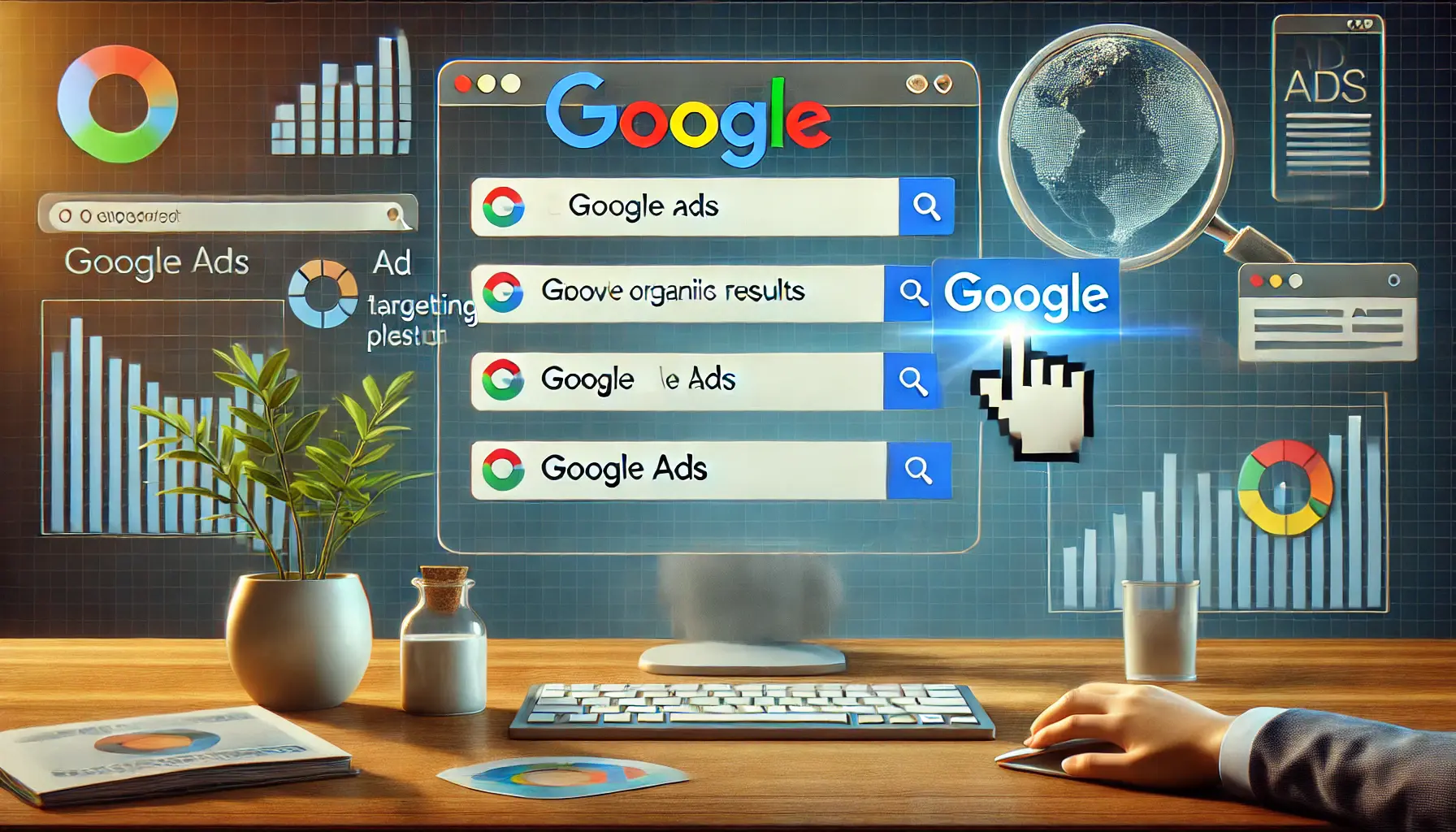
A representation of Google Ads’ versatile positioning in search results.
Positioning of Google Ads in Search Results
Google Ads can appear in many different locations within the SERPs.
By default, they tend to show below Local Service Ads but above organic search results.
Additionally, Google Ads may appear at the bottom of the SERPs, on YouTube, and across Google’s Display Network, which includes thousands of partner websites.
This versatility means business owners can achieve greater visibility beyond just the search results page.

A visualization of how ad placement affects click-through rates on search engine results pages.
Impact of Ad Placement on Click-Through Rates
The placement of your ads directly affects their visibility and, consequently, the click-through rates (CTR).
Generally, ads displayed higher on the SERPs receive more attention and clicks.
Therefore, LSAs, with their top-of-page placement, typically enjoy better CTRs, particularly from users searching for local services.
On the other hand, although Google Ads may not always occupy the topmost position, their varied positioning on different platforms still attracts significant traffic, especially when targeting a broader or more niche audience.
Understanding these placement dynamics is crucial for choosing the advertising platform that best aligns with your business objectives and target audience.
Ad placement significantly impacts visibility and customer engagement, making it a critical factor in your advertising strategy.

A representation of digital marketing targeting tools and audience reach through various devices.
Targeting and Audience Reach
When choosing between Local Service Ads (LSAs) and Google Ads, it’s essential to understand how each platform targets audiences and the extent of their reach.
This knowledge will help you align your advertising strategy with your business objectives.

A visualization of geographical targeting in Local Service Ads emphasizing local business reach.
Geographical Targeting in Local Service Ads
Local Service Ads are designed to connect service providers with customers in their immediate vicinity.
They use geo-targetingThe practice of delivering content or advertisements to users based on their geographic location. to match your services with users searching in the service areas you specify.
This hyper-local focus ensures that your ads reach potential clients who are within the vicinity of your business and are actively seeking the services you provide.
For instance, a plumber in New York City can have their ads displayed to users searching for plumbing services within specific boroughs or neighborhoods, maximizing the relevance of each lead.
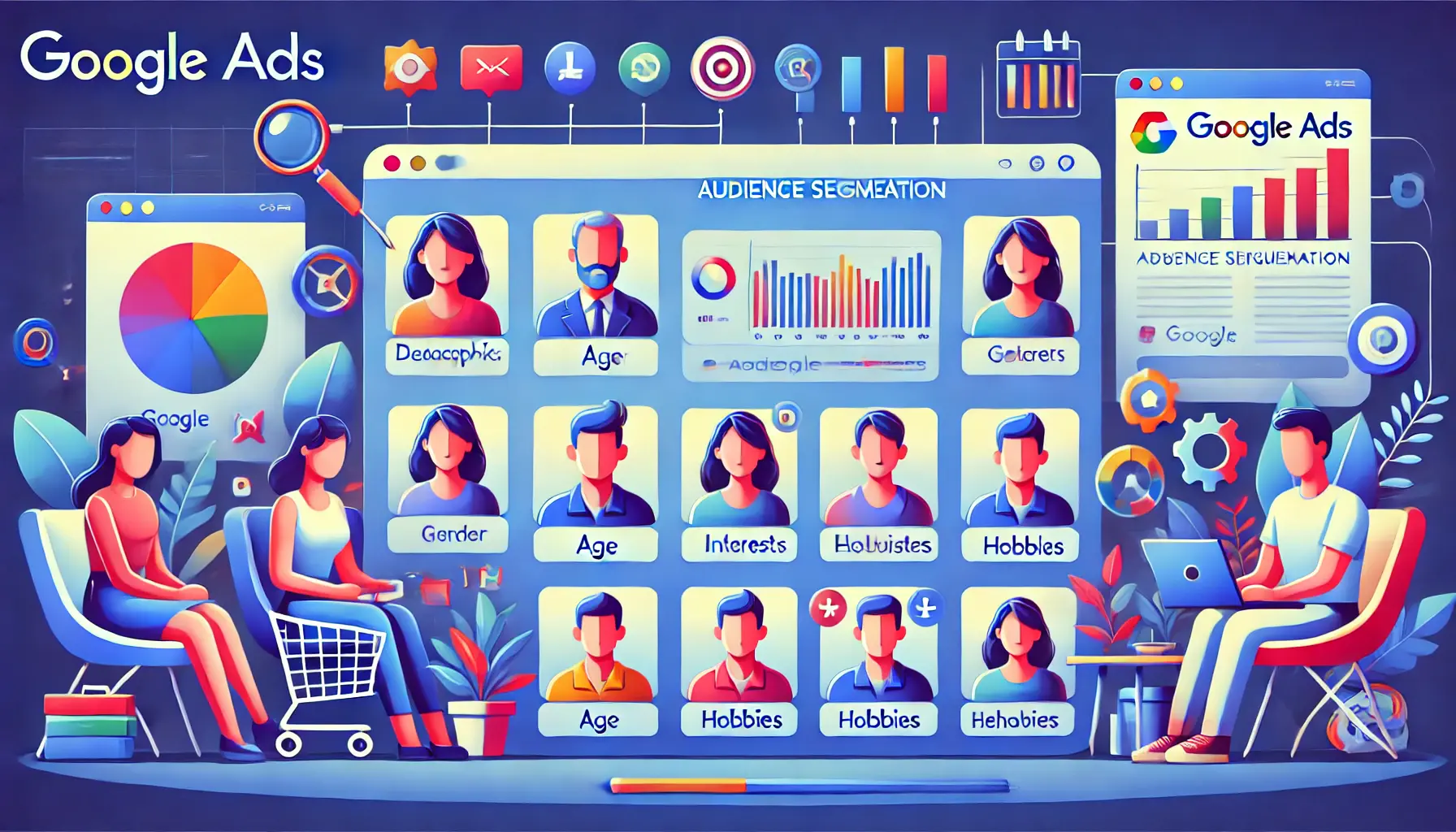
A visual representation of audience segmentation using Google Ads targeting tools.
Audience Segmentation with Google Ads
Google Ads offers extensive targeting capabilities beyond just geographic location.
Advertisers can define their audience based on:
- Demographics: Age, gender, parental status, and household income.
- Interests: Hobbies, activities, and interests that align with your products or services.
- Behaviors: Past purchasing behavior, brand interactions, and device usage.
- Keywords: Specific terms and phrases users are searching for related to your offerings.
This level of detailed targeting allows businesses to tailor their campaigns to reach specific segments of the population, whether locally, nationally, or globally.
For example, an online retailer can target young adults interested in fitness across the country, ensuring their ads reach a highly relevant audience.
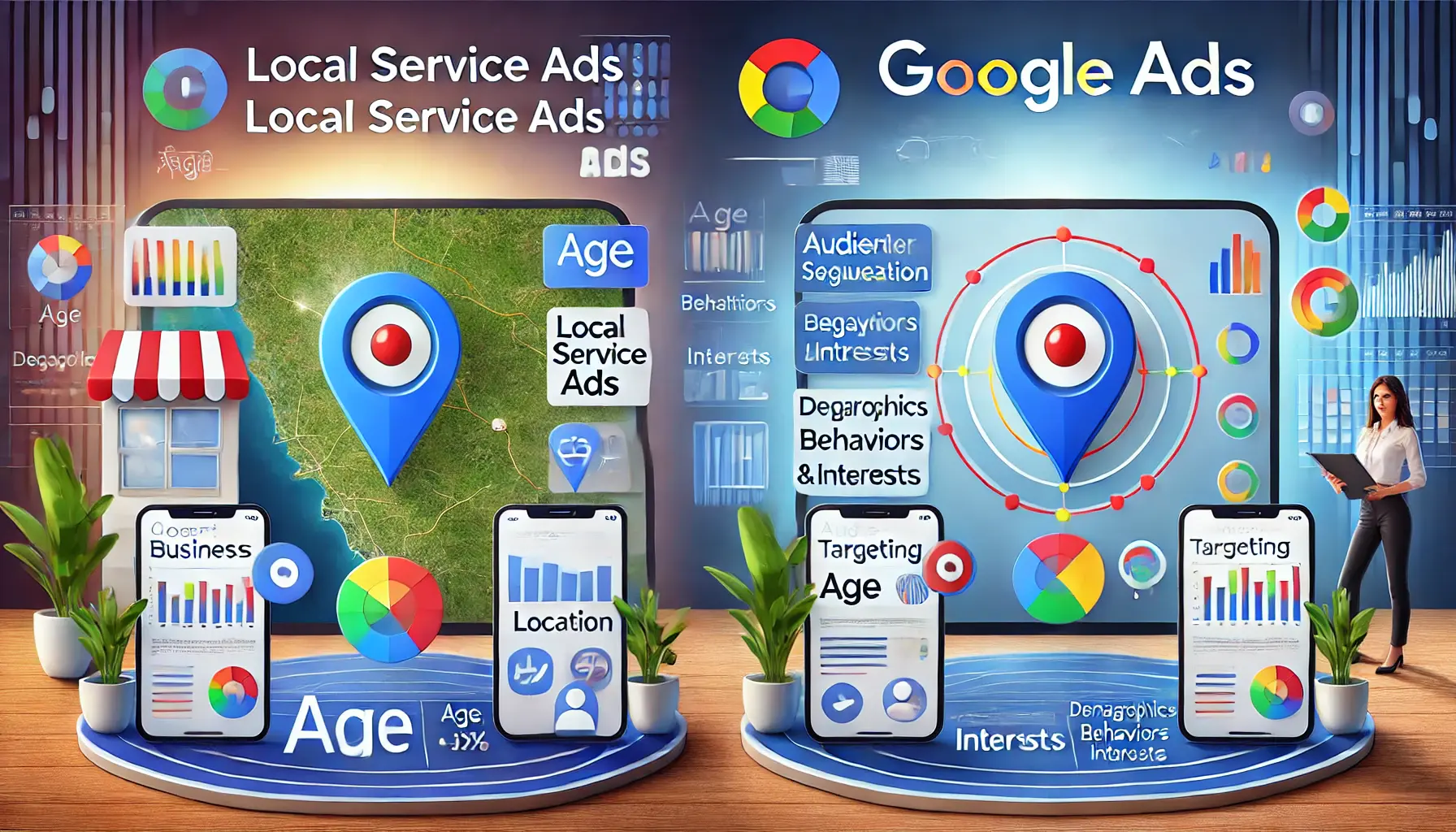
A visual comparison of targeting options between Local Service Ads and Google Ads.
Which Platform Offers Better Targeting for Your Business?
The choice between LSAs and Google Ads depends on your business model and advertising goals:
- Local Service Providers: If your business depends on local customers, such as handyman services or doctor’s offices, LSAs are ideal because they are oriented toward local searches and use a pay-per-lead model, meaning you only pay when someone is genuinely interested in your service.
- Businesses Seeking Broader Reach: If your goal is to increase brand awareness or target a specific demographic beyond your immediate area, Google Ads provides the flexibility to reach a wider audience with diverse ad formats and advanced targeting options.
By assessing your business needs and the targeting possibilities of each platform, you can decide which advertising strategy fits best for you and delivers the maximum return on investment.
Tailoring your targeting approach—whether hyper-local with LSAs or wide-reaching with Google Ads—ensures optimal audience engagement.
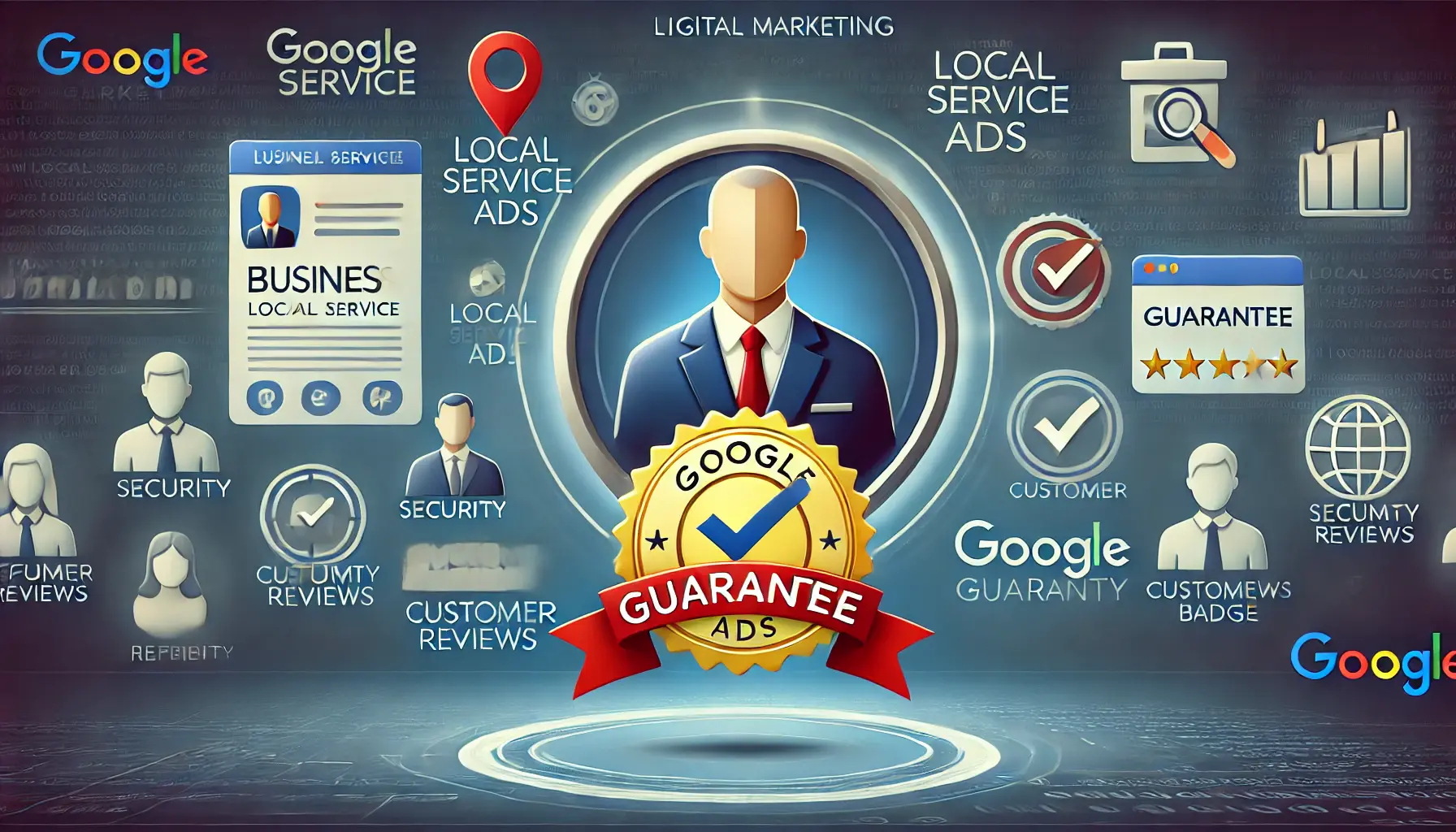
A visual representation of trust and credibility through the Google Guarantee badge in Local Service Ads.
Trust and Credibility: The Google Guarantee Badge
Establishing trust and credibility is essential for any business aiming to attract and retain customers.
One effective way to enhance your business’s reputation is by obtaining the Google Guarantee badge through Local Service Ads (LSAs).
This badge signifies that your business has undergone Google’s thorough screening and verification process, providing potential customers with confidence in your services.
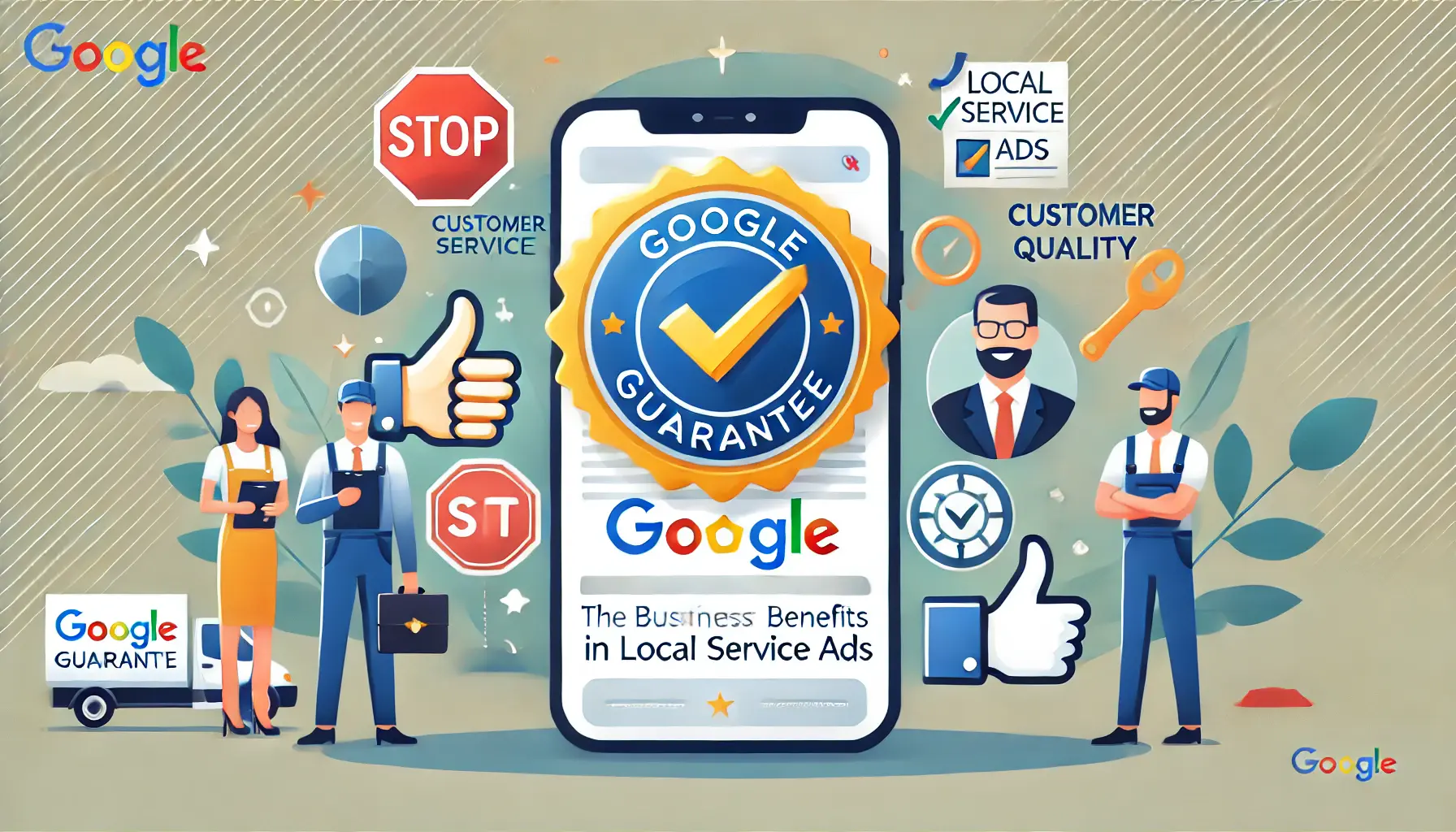
A visual representation of the benefits of the Google Guarantee badge in Local Service Ads.
Benefits of the Google Guarantee Badge
Displaying the Google Guarantee badge offers multiple advantages for businesses:
- Increased Credibility: The badge serves as proof that your business has been vetted by Google, enhancing its reliability and trustworthiness.
- Enhanced Visibility: Businesses with the badge appear prominently in search results, increasing their chances of attracting clients.
- Customer Assurance: Google may reimburse customers up to a certain amount if they’re dissatisfied with the quality of your work, adding an extra layer of confidence in choosing your services.

A visual representation of the steps involved in obtaining the Google Guarantee badge.
How to Obtain the Google Guarantee Badge
To earn the Google Guarantee badge, your business must complete Google’s screening and verification process.
This process may include:
- Background Checks: Verifying the legitimacy and history of your business.
- License Verification: Confirming that your business holds all required licenses for your industry and location.
- Insurance Verification: Ensuring your business has adequate insurance coverage to provide protection and build trust.
Starting November 21, 2024, only businesses with a verified Google Business Profile will be able to run Local Service Ads.
This update is designed to reduce fraud and enhance customer trust.
Therefore, verifying and maintaining an accurate Google Business Profile is essential to securing the longevity of your ad presence.
Obtaining the Google Guarantee badge positions your business prominently in search results, providing an immediate advantage in visibility and trustworthiness.
This foundation of trust not only increases leads but also fosters sustainable growth for your business.
The Google Guarantee badge builds customer trust, making it a valuable feature for service-based businesses.

A visual representation of the decision-making process between Local Service Ads and Google Ads.
Making the Right Choice: Local Service Ads vs Google Ads
Choosing the right advertising platform is one of the most important decisions you can make for your business.
While both Local Service Ads (LSAs) and Google Ads have their merits, understanding the key differences between them will help you align your advertising efforts with your goals and target audience.
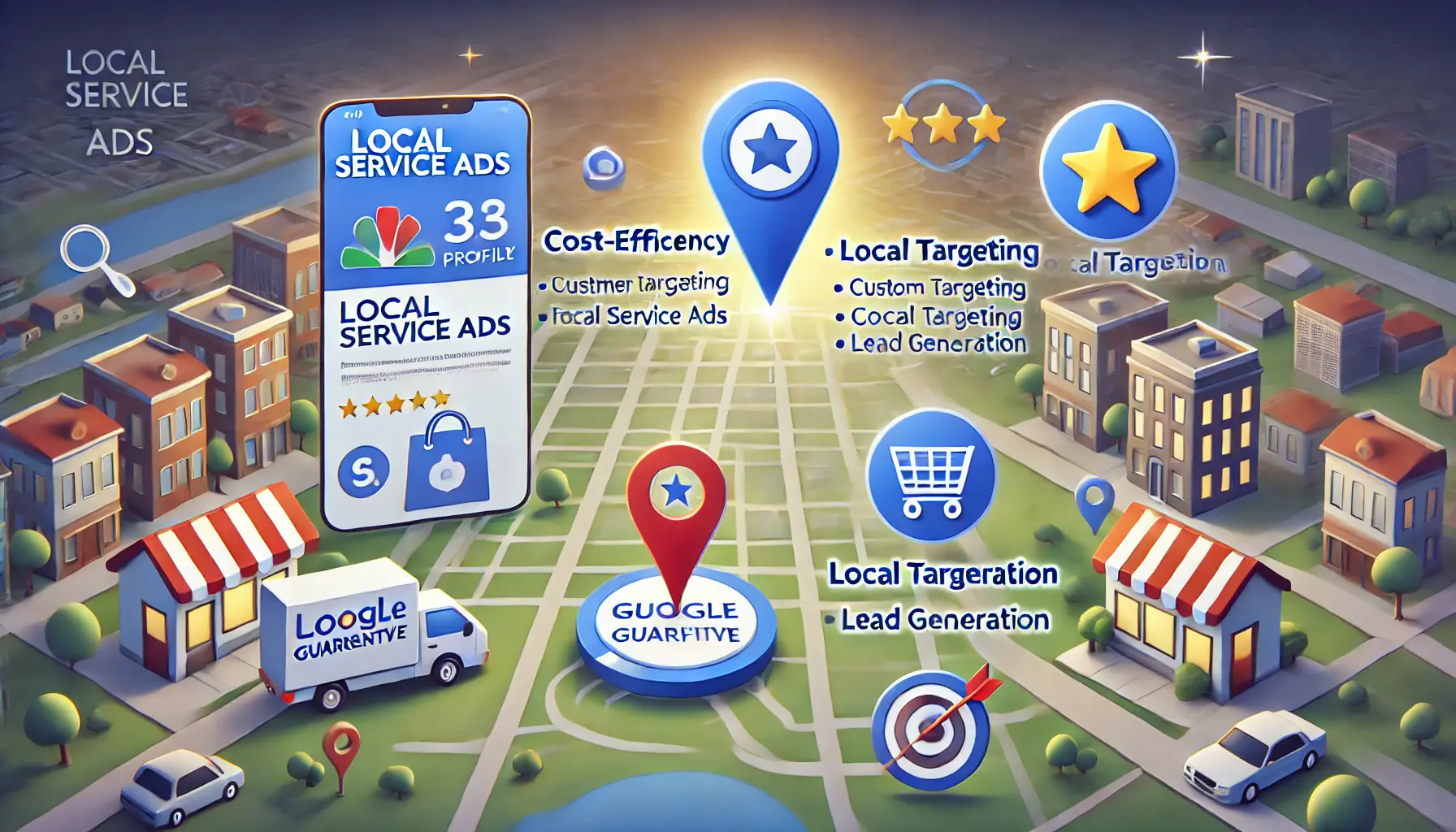
A visual representation of the key features of Local Service Ads, highlighting trust, local targeting, and lead generation.
Key Takeaways from Local Service Ads
Local Service Ads are tailored for businesses that rely on local customers.
Their pay-per-lead model ensures cost efficiency, while features like geo-targeting and the Google Guarantee badge enhance visibility and trust.
LSAs are particularly beneficial for service providers such as plumbers, electricians, and healthcare professionals who aim to attract nearby clients.
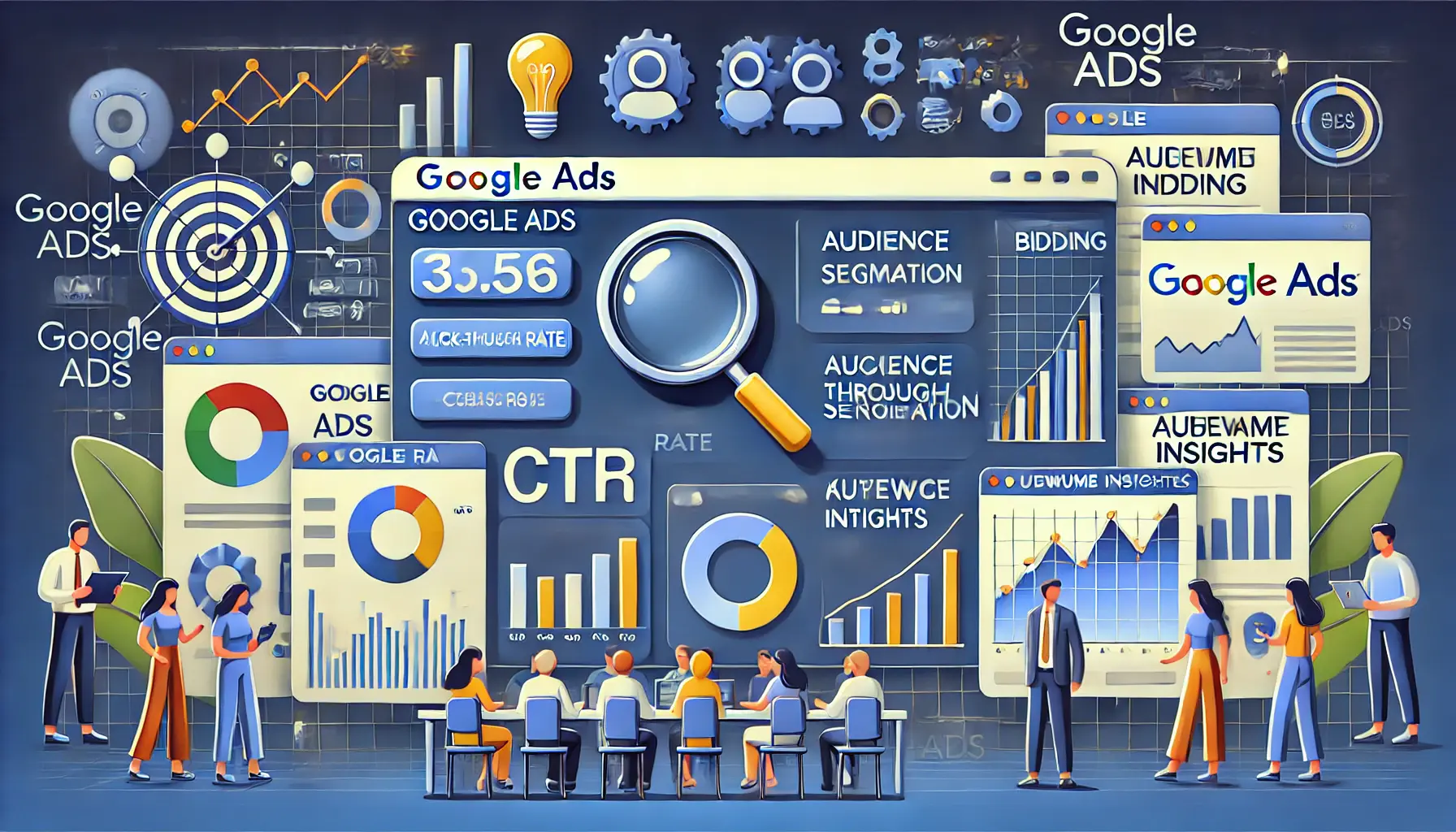
A visual representation of the insights provided by Google Ads, emphasizing its analytics and targeting capabilities.
Insights on Google Ads
Google Ads, with its pay-per-click model, offers unparalleled versatility.
Businesses can leverage extensive targeting options, including demographics, interests, behaviors, and keywords, to reach a wider or more specific audience.
The ability to use diverse ad formats, from search ads to video ads, makes Google Ads a powerful tool for those seeking broader reach and brand awareness.

A visual representation of the decision process between Local Service Ads and Google Ads.
Which Platform Should You Choose?
The choice between LSAs and Google Ads depends on your business objectives:
- Choose Local Service Ads: If your goal is to attract local clients and pay only for verified leads, LSAs are ideal. Their top-of-page placement and focus on building trust with potential customers make them perfect for localized services.
- Choose Google Ads: If you aim to target a broader audience, build brand awareness, or experiment with various ad formats, Google Ads provides the flexibility and reach you need.

A visual representation of the final thoughts and decision-making process between Local Service Ads and Google Ads.
Final Thoughts
Both Local Service Ads and Google Ads are effective systems, but they cater to slightly different marketing priorities.
You can choose the right platform by evaluating factors such as cost structure, ad placement, targeting capabilities, and trust-building features.
Whether you leverage Google Ads for broader targeting or rely on Local Service Ads for their local customer focus, the key is to position your business effectively and generate maximum return on investment (ROI).
By understanding and leveraging the power of Local Service Ads and Google Ads, you can set your business up for continued growth and success in the competitive digital marketing landscape.
Ultimately, your choice between LSAs and Google Ads depends on your specific business objectives and customer base.
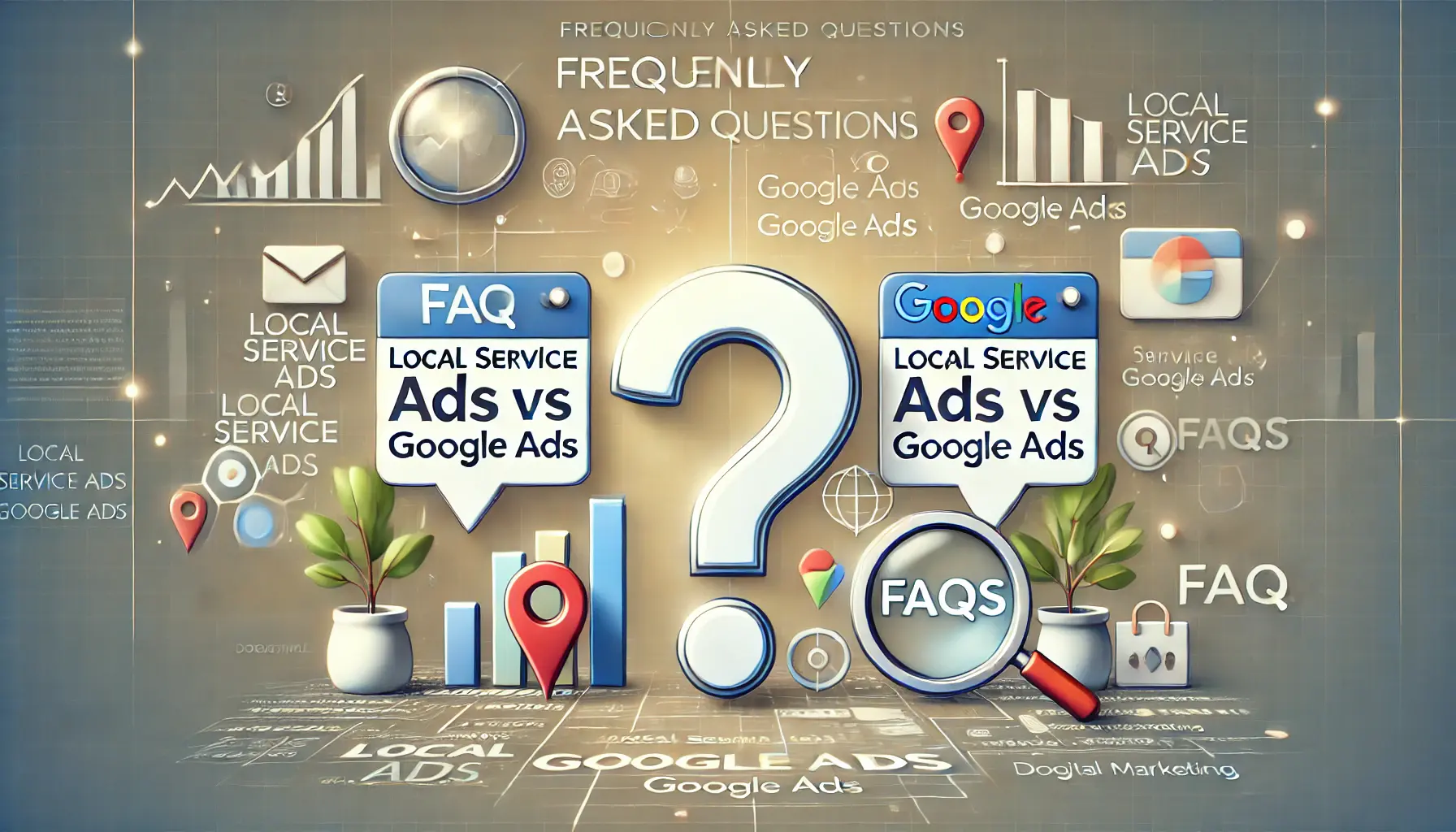
A visual representation of frequently asked questions regarding Local Service Ads and Google Ads.
Your campaigns can be managed by an agency specialized in Google Ads, check out our service page.
Frequently Asked Questions: Local Service Ads vs Google Ads
Below are common questions regarding Local Service Ads and Google Ads:
Local Service Ads operate on a pay-per-lead model, connecting local service providers with nearby customers.
Google Ads use a pay-per-click model, offering broader targeting options and various ad formats.
Service-based businesses like plumbers, electricians, and locksmiths that target local customers benefit most from Local Service Ads due to their local focus and pay-per-lead model.
Yes, businesses can use both platforms together to maximize reach.
LSAs can target local customers, while Google Ads can broaden the audience beyond the local area.
The Google Guarantee badge, associated with Local Service Ads, signifies that Google has vetted the business, enhancing customer trust and credibility.
No, Local Service Ads are only available for specific service-based industries.
You need to check if your business qualifies for LSAs.
No, Google determines relevant keywords for Local Service Ads based on your business type and services, simplifying the advertising process.
Google Ads offers more control over ad copy and targeting options, allowing businesses to customize their ads and reach specific audiences based on various factors.
Local Service Ads charge on a pay-per-lead basis, meaning you pay only when a potential customer contacts you.
Google Ads operate on a pay-per-click model, charging each time someone clicks on your ad.
Yes, both platforms provide performance metrics.
Google Ads offers detailed analytics, while Local Service Ads provide insights into lead volume and quality.




